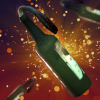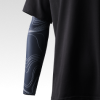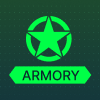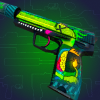The news about CS:GO’s potential transition to the Source 2 engine is appearing so often that they can no longer cause a robust reaction. Insides here and there, some leaks, former employees confirming stuff… But it’s all just speculation. In their usual manner, Valve seldom reveal plans and only occasionally drop Easter eggs and riddles for the community to solve. But it seems that the current situation is the closest to reality.
In this article, CS.MONEY Blog discusses what can happen in CSGO Source 2, how these things can affect the game and answers the central question: what will happen to skins in CS:GO 2? Get ready, as the list of things to discuss is quite impressive!
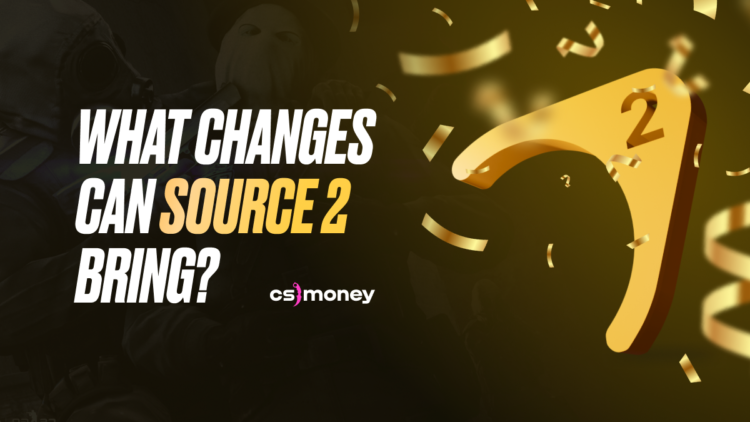
128 Tickrate in CS:GO Source 2
One of the most important things people often talk about is transferring matchmaking servers to the 128-tickrate system. What is a tickrate? In short, one tick is one data packet that includes all information about what is happening on the server at a particular moment. So, one second is divided into 128 fragments, each uploaded to the server and downloaded by other players. For a high tickrate, you need high FPS for all users and a fairly fast Internet connection. Otherwise, the server will send-receive empty packets.
Why is 128 tickrate better than 64? In general, the difference is not so noticeable for ordinary users, that is, for the majority. Apparently, some experiments were made on Reddit, where people weren’t aware of the tickrate of their servers. The research showed that it’s all the same for them. In terms of calculations and mathematics, a high tick rate server brings:
- More precise grenade throws (since they have a higher movement speed, much higher)
- Increased accuracy at a distance of 20+ meters (but even then, these errors are microscopic)
You can read more about how tickrate 128 works here.
Why is this important for players? Many people at the highest ranks and those close to esports play on unofficial servers (read FACEIT) precisely because of the tickrate and grenade accuracy.
Will Valve add 128 tickrate to CS:GO? Probably yes. CS is the only one of the advanced first-person shooters that still uses the 64 tick rate on official servers. It’s time to keep up with the times!
New MM in CS:GO: FACEIT Killer?
Some insiders say Valve may completely overhaul the matchmaking system inside CS:GO and make third-party services useless. Sounds radical. Of course, it is unlikely that the developers have a goal and a desire to get rid of FACEIT, but at least it would have been worth making a more fair and logical system inside the game a long time ago.
CS:GO uses the Glicko system, the same as in chess and Dota 2. In every match, you face opponents of different ranks and defeating a strong opponent gives you more points than a weak one, just like losing to weak players will lead to less loss of points, respectively. There is a similar system on FACEIT, but they use Glicko’s “predecessor”, ELO, instead. FACEIT’s main advantage is that they display a vast amount of data provided and detailed player profiles.
It is difficult to say what the new system will be like since the current one is fair and just. After all, the whole problem of the existing MM in CS:GO is opacity. Here you have “LEMs” or “GEs”, and that’s it. No numbers, no stats, no analytics, no progression, nothing. Perhaps Valve may expand it and calibrate the balance.
Update Anticheat in CS:GO
Anti-cheat in CS:GO will most likely not be updated. Now at Valve, everything works fine despite the community’s eternal critique vibe. Two points.
First, recurring huge waves of bans. Several times a year, a news piece pops out showing a massive ban wave ending thousands of cheater accounts from CS:GO. And these do not consider the passive bans income of players who launch the simplest cheats they come across on Google to get wrecked by a hammer of justice immediately. The current VACNET system runs on artificial intelligence, and it studies and compares player actions, behaviour patterns, and so on, and bans only after confirmation by moderators.
And a recent story from neighbouring Dota perfectly describes the situation with third-party programs. Overwolf is a third-party software that collects information about opponents, their best heroes, ward-placing, preferred artefacts, etc. In a small update, Valve threw bait into Dota, which Overwolf ate. And thus, thousands of cheaters got revealed and banned immediately. The official blog post goes like this: Cheaters will never be welcome.
Source 2 System Requirements. How will Source 2 affect FPS?

Judging by Dota 2 once again, which was updated to Source 2 back in 2015, the in-game FPS will even get bigger (Dota saw an increase of 10-15%). And all because Source 2 is much simpler and more compact than the 18-year-old Source 1. And as the developers themselves say, it is a thousand times more convenient and faster to work with it and much more stable.
However, only at the beginning. Then, when Valve updates all the maps, releases new skins, and adds improvements to lights/shaders/shadows and other features of Source 2, the average FPS will drop. But, most likely, to a stable and familiar level. Everything won by switching to an improved engine will be rolled back due to the high quality of the accompanying updates.
What PC could run CS:GO Source 2? The same as CS:GO Source 1. Once again, returning to Dota 2’s experience, only very old and weak computers will significantly suffer from the engine update. But honestly, it’s not so scary because Source 2 was first introduced in 2012, which means that even a ten-year-old computer can do a great job.
Will Source 2 bring new graphics?
No. CS:GO is likely to stay the same in terms of graphics. The game’s concept is realism, and Valve will stick to it as a hallmark of the brand. Overall texture quality will grow, as well as other new effects (e.g., Source 2 allows you to set several light sources simultaneously), and much more. This is not very important for ordinary users because we will turn the settings to MINs to increase FPS anyways.

New maps on Source 2 and grenade throw fix
Over the past six months, insiders have reported that developers were working on maps with s2 prefixes, which obviously refer to the new csgo engine. Interestingly, they are almost indistinguishable from the original. This suggests that Valve cares about their player base, as there is no point in drastically redesigning what is already working great.
The new engine will allow people to create larger maps, but what will this lead to? More co-op maps? The meta of two or three snipers? Completely new game modes? Only time will tell.
But here another question arises: what about the endless grenade problems, will Source 2 fix nade bugs? Even on the recent Anubis, invisible spots still ricochet off throws. The answer is simple: everything is being polished and will be polished indefinitely. Alas, there will always be enough bugs, and developers will slowly deal with all the issues. It’s worth accepting that everything will not look right from the first seconds.
Source 2 skins will be different?
It is unlikely that Valve will break their market of incredible volumes. With a very high probability, all skins will remain the same. And again, according to what we have seen in Dota, even sets from 2012 have been adapted for Source 2, and although they look bad today, they can still be used and sold.
So, CS:GO skins in Source 2 will remain the same, and your inventory will not change. But it will bring plenty of opportunities for new ideas.
First, as UAD6, the creator of SCAR-20 Fragments, pointed out in an interview, Valve has yet to add two huge and important effects to skin creation (“Metal”, which will give reflections, lights, volume and gloss; and “Roughness”, which is responsible for density and roughness), which, like pearlescent in 2017, can turn the tides.
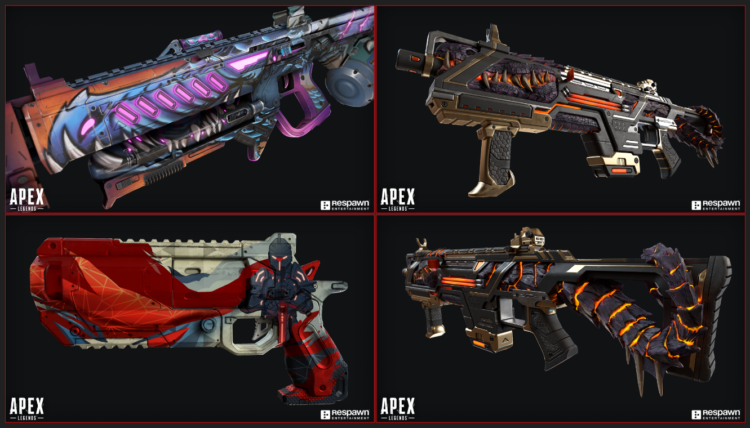
Of course, even despite the engine’s capabilities, animated skins will likely never appear. For example, Apex Legends has dozens of insanely animated guns, and it works on Source 1! Nevertheless, in CS:GO, most likely we will see only works of light/shadows/surfaces and pseudo-animation.
When will Source 2 come out?
This is perhaps the most hyped question. Only the developers themselves can tell the release date of CS GO Source 2. Some talk about the end of March or the beginning of April, but again, these are all speculations, not supported by any facts or statements. However, the Paris Major from BLAST is pretty soon, and it is unlikely that the update will be released in the middle of the tournament. So either shortly or not before the end of May.
In addition, most likely, Valve will present three options for launching the game (as was the case with Dota 2) at first:
- CS:GO Source 1
- CS:GO Source 2
- CS:GO Source 2 Dev Kit (for developers)
And slowly they will move the entire player base to the new engine. Obviously, this will not be abrupt, but it will not be painful either because technological solutions from Source 2 to the original engine have long been attached. Roughly speaking, even today CS:GO exists more on Source 1.5 than on a pure original engine.
During the beta test, players will encounter a bunch of bugs, lags, optimisation problems, and so on, but all this will be polished. Most likely, players will not even notice the difference after the transition.

